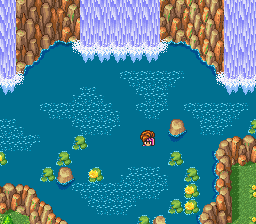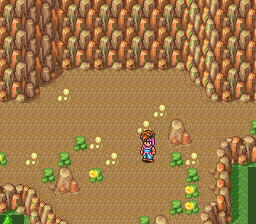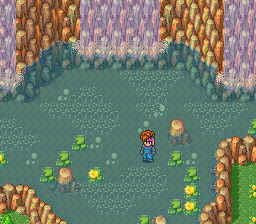One pixel line missing in Snaphots
Moderator: ZSNES Mods
-
creaothceann
- Seen it all
- Posts: 2302
- Joined: Mon Jan 03, 2005 5:04 pm
- Location: Germany
- Contact:
-
Deathlike2
- ZSNES Developer

- Posts: 6747
- Joined: Tue Dec 28, 2004 6:47 am
Big <3 for (almost) showing all the lines correctly, I've been waiting for this for quite a while. However, as seemed to be mentioned above, the "garbage line" doesn't quite appear how it would on a real snes capture (colour is either wrong, or for games that usually use it to actually display stuff it still just stays a single colour). I know I'm just being rather nitpicky here, but is there any chance of it ever displaying properly  ?
?
Otherwise, what are the disadvantages of using the old graphics engine? Is it any less accurate in cases?
Otherwise, what are the disadvantages of using the old graphics engine? Is it any less accurate in cases?
-
Deathlike2
- ZSNES Developer

- Posts: 6747
- Joined: Tue Dec 28, 2004 6:47 am
The Old Graphics Engine uses a 13-bit color palette, instead of 15-bit for speed reasons. A game that comes to mind would be CT where it becomes rather noticable.
Edit: Forgot to mention FF3/6 as well.
Edit: Forgot to mention FF3/6 as well.
Last edited by Deathlike2 on Tue Jan 30, 2007 2:44 am, edited 1 time in total.
Continuing [url=http://slickproductions.org/forum/index.php?board=13.0]FF4[/url] Research...
16 bit colour has 5 bits for red/green/blue (15 bits) and the other 1 bit is used for transparencies.filouk wrote:I see... The SNES has a total of 32768 colours, and ln(32768) / ln(2) = 15 bits.
Edit: Yes thant means 2^5 = 32. So the colour range would be from 0 to 31. I don't see where you're going with this.
Last edited by Cyrus on Tue Jan 30, 2007 9:26 pm, edited 3 times in total.
Yep, but I'm wondering how can you have transparencies with RGB565 then?Firon wrote:Not necessarily. If it's RGB565, then there's an extra bit available for green (which is the color our eyes are most sensitive to).Cyrus wrote:16 bit colour has 5 bits for red/green/blue (15 bits) and the other 1 bit is used for transparencies.
-
Deathlike2
- ZSNES Developer

- Posts: 6747
- Joined: Tue Dec 28, 2004 6:47 am
Wouldn't RGB565 take the full 16 and not leave anything for transparencies? That was my question...Deathlike2 wrote:Well, in theory you could have 8-bit transparencies.. the problem is the palette isn't big enough to make it possible in the case of the SNES. 15-bit color is plenty enough to do transparancies.
-
Deathlike2
- ZSNES Developer

- Posts: 6747
- Joined: Tue Dec 28, 2004 6:47 am
Dude, you're not paying any attention. Potential for transparancies is limited to the palette you are working with. In the case of SNES, RGB555 is what is used, the other unused bit is used for something else internally to the emulator, and not the actual (SNES) system itself.
Continuing [url=http://slickproductions.org/forum/index.php?board=13.0]FF4[/url] Research...
-
Deathlike2
- ZSNES Developer

- Posts: 6747
- Joined: Tue Dec 28, 2004 6:47 am
There isn't one in this instance IIRC. The 13-bit engine is probably RGB444 of some sort with the extra bit used for add/sub.Firon wrote:I think he's thinking of an alpha channel, which uses extra bits (24-bit color + 8-bit alpha, for example).
The best analogy is to consider some artist drawing a picture. If he had an "8-bit" palette, he would have access to like 4-8 shades (2-3 bits) of red (darker/brighter). With the "13-bit" palette, there would be 16 shades (4-bits).. and the "15-bit" palette", there would be 32 shades (5-bits). There is no "transparency bit" here.. just darker/brighter shades to appear like transparancy is applied.
Edited for errors.
Last edited by Deathlike2 on Tue Jan 30, 2007 10:54 pm, edited 2 times in total.
Continuing [url=http://slickproductions.org/forum/index.php?board=13.0]FF4[/url] Research...
-
Deathlike2
- ZSNES Developer

- Posts: 6747
- Joined: Tue Dec 28, 2004 6:47 am
-
creaothceann
- Seen it all
- Posts: 2302
- Joined: Mon Jan 03, 2005 5:04 pm
- Location: Germany
- Contact:
Actually it's because the CPU registers are 16 bits wide. The SNES also has 1-byte instructions.Agozer wrote:The SNES CPU is 16-bit, meaning it uses 16-bit instructions.
On the one hand there's the output device. The SNES takes 5 bits per color channel to determine the output color. The 16th bit of the source is ignored.Cyrus wrote:Yep, but I'm wondering how can you have transparencies with RGB565 then?Firon wrote:Not necessarily. If it's RGB565, then there's an extra bit available for green (which is the color our eyes are most sensitive to).Cyrus wrote:16 bit colour has 5 bits for red/green/blue (15 bits) and the other 1 bit is used for transparencies.
On the other hand you can tell the SNES to render the current VRAM data in different ways, for example a forest once with water in a lake and once without water in said lake. By adding the two resulting screens you get transparent water, still at 15 bpp.
 +
+  =
= 
RGB8888 etc. is just how the pixels are stored. Since true color requires only 24 bits, the rest is used to indicate the pixel's opacity. Very useful for image editing, but not for output.
vSNES | Delphi 10 BPLs
bsnes launcher with recent files list
bsnes launcher with recent files list
